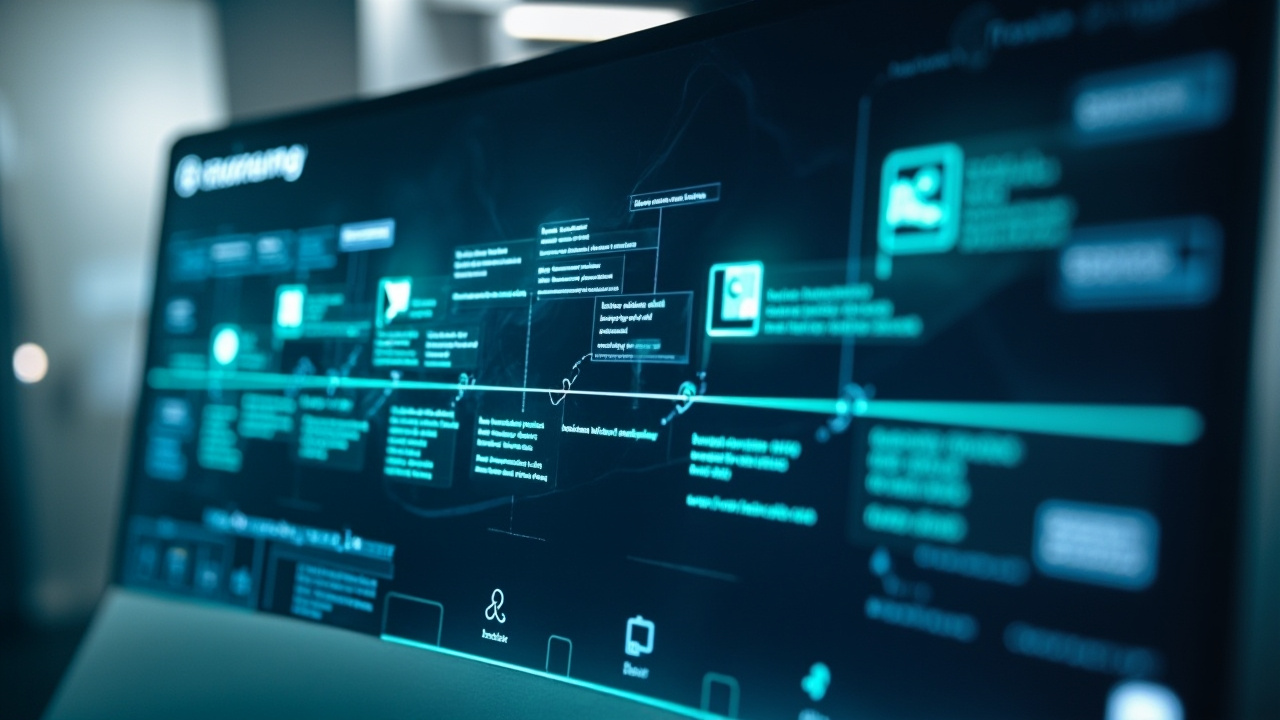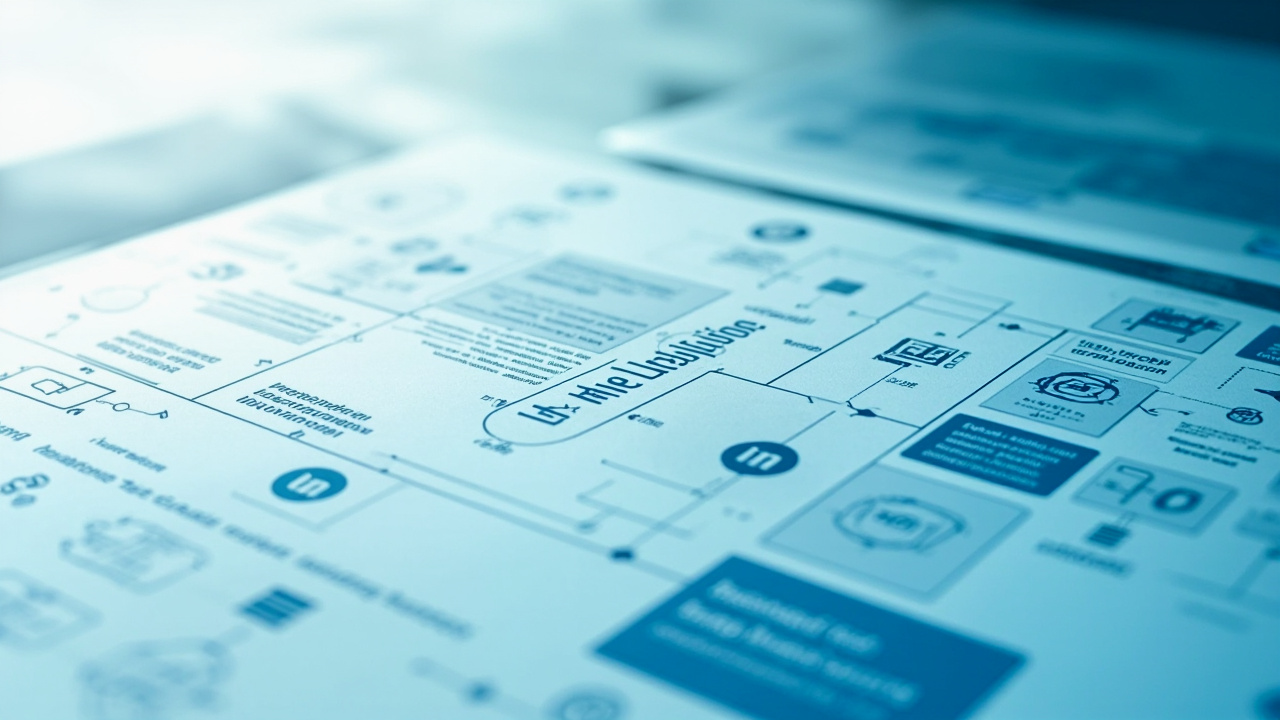In the rapidly evolving world of software development, maintaining high-quality standards is no longer an option but a necessity. As applications grow in complexity and user expectations soar, the traditional methods of software testing often fall short. Today, organizations face the dual challenge of ensuring robust software quality while accelerating delivery times. This is where the art and science of software testing come into play, offering a roadmap to navigate these challenges.
Software testing has undergone a metamorphosis over the years. From manual testing to automated solutions, the journey reflects the dynamic nature of the industry. Yet, as we stand on the cusp of a new era, powered by artificial intelligence and machine learning, the landscape is set to transform once again. This transformation isn’t just about speeding up processes but also about enhancing the accuracy, reliability, and scope of testing.
This blog post delves deep into the multifaceted world of software testing, exploring its evolution, current challenges, and the innovative solutions that are redefining the field. Along the way, we’ll also touch upon advanced platforms like GenQE, which exemplify how AI is being harnessed to revolutionize quality engineering. By the end, you’ll gain a comprehensive understanding of software testing’s trajectory, enriched with insights into how emerging technologies are setting new benchmarks for quality and efficiency.
The Evolution of Software Testing: From Manual to Automated

The journey of software testing from its nascent stages to the sophisticated methodologies of today is a testament to the industry’s adaptability. Initially, testing was a manual and labor-intensive process, requiring meticulous attention to detail. Testers would execute test cases manually, documenting results and identifying defects a process often fraught with human error.
The Rise of Automation
The introduction of automated testing tools marked a significant shift in how testing was approached. Automation promised to reduce the time and effort involved in testing, offering repeatability and precision. Tools like Selenium and Appium became staples in the tester’s toolkit, allowing testers to create scripts that could be run across different environments, ensuring consistency and reliability. This shift enabled teams to execute large volumes of test cases quickly, catching defects early in the development cycle and reducing the risk of flawed releases.
“Automation transformed software testing by introducing speed and reliability, yet it also brought new challenges in script maintenance and coverage.”
Challenges of Automation
Despite its many advantages, automation is not without its challenges. Automated tests require ongoing maintenance, especially in dynamic environments where user interfaces are frequently updated. This necessitates a dedicated effort to keep the test scripts up to date, which can detract from the efficiencies gained. Furthermore, automation often struggles with the nuanced understanding required for complex test scenarios, where human insight is invaluable.
This has led to the emergence of self-healing automation solutions, such as those offered by platforms like GenQE. By leveraging AI, GenQE can adjust scripts in real-time, reducing downtime and ensuring that testing keeps pace with development. This self-healing capability represents a significant advancement, minimizing the manual intervention required and maintaining the robustness of automated test suites.
Beyond Automation: The AI Revolution
Artificial intelligence is the next frontier in software testing. AI-driven tools analyze vast amounts of data to predict defects, optimize test cases, and provide insights that were previously unattainable. GenQE, for instance, uses AI to generate test cases based on historical data and user behavior, enhancing coverage and reducing the need for manual intervention. This approach not only increases efficiency but also allows for more accurate testing, as AI can adapt to changes and learn from past outcomes to improve future testing scenarios.
“AI in testing is not just about automation; it’s about intelligence and adaptability, offering insights that drive better decision-making.”
Transitioning from traditional methods to AI-driven solutions requires a paradigm shift in how organizations approach testing. Yet, the potential benefits faster releases, improved accuracy, and cost savings make this transition not just desirable but essential for staying competitive in today’s fast-paced software environment.
Understanding the Current Challenges in Software Testing

Despite advancements, the world of software testing is fraught with challenges that must be navigated to ensure the delivery of high-quality applications. These challenges stem from the increasing complexity of modern software, the rapid pace of development, and evolving user expectations.
Complexity and Scale
Modern applications are more complex than ever, often integrating numerous third-party services and operating across multiple platforms. This complexity increases the risk of defects and makes comprehensive testing more challenging. Ensuring that applications function seamlessly across web, mobile, and cloud environments requires robust testing strategies that can handle the scale and diversity of modern software architectures.
“As applications grow in complexity, so too must our testing strategies evolve to ensure comprehensive coverage and reliability.”
One practical example is the testing of e-commerce platforms, where multiple components such as payment gateways, inventory systems, and user interfaces must work together flawlessly. Any disruption or defect in these integrations can lead to significant business losses. Thus, comprehensive testing strategies that include both functional and non-functional testing aspects are critical.
Speed vs. Quality
The demand for faster release cycles often puts pressure on testing teams to deliver results quickly. This speed can come at the expense of thoroughness, leading to a higher risk of defects slipping into production. Balancing speed with quality is a perennial challenge that requires innovative solutions. Continuous integration and continuous deployment (CI/CD) pipelines are a popular approach to address this, allowing for rapid iteration and feedback loops. However, these pipelines must be supported by robust testing practices to ensure that quality is not compromised.
Evolving User Expectations
Today’s users expect flawless experiences, with little tolerance for errors. This places additional pressure on testing teams to ensure that applications not only function correctly but also deliver a superior user experience. Usability testing, therefore, becomes a critical component of the testing process, as it focuses on the end-user’s interaction with the application. Techniques such as A/B testing and user feedback loops can provide valuable insights into user preferences and behaviors, helping refine the application to meet evolving expectations.
The Role of AI in Addressing Challenges
AI-driven platforms like GenQE offer solutions to these challenges by automating test generation and execution, prioritizing tests based on risk, and providing comprehensive coverage across different platforms. By leveraging historical data and user behavior, AI can predict and prevent potential defects, ensuring that quality is maintained without compromising speed. This proactive approach allows teams to focus their efforts on high-impact areas, improving overall efficiency and effectiveness.
“AI is redefining the boundaries of what’s possible in testing, offering solutions that are both intelligent and adaptable.”
In overcoming these challenges, organizations must adopt a holistic approach to testing, integrating AI and automation with traditional methods to achieve the best results.
Embracing Innovative Solutions: The Role of AI and Automation

Innovation in software testing is driven by the need to address the challenges of complexity, speed, and quality. AI and automation are at the forefront of this innovation, offering tools and techniques that enhance testing processes and outcomes.
AI-Driven Test Generation
One of the most significant innovations in testing is the use of AI to automate test generation. By analyzing software requirements and user behavior, AI tools like GenQE can create comprehensive test cases that cover a wide range of scenarios. This reduces the dependency on manual test design and ensures that critical areas are tested thoroughly. For example, in a banking application, AI can identify high-risk transactions or user behaviors and prioritize test cases accordingly, ensuring these critical areas are rigorously tested.
“AI-driven test generation not only increases efficiency but also enhances the accuracy and coverage of testing.”
Smart Test Execution
AI’s ability to prioritize and execute tests based on risk analysis is another game-changer. This approach ensures that high-risk areas are tested first, optimizing testing efforts and focusing on high-impact defects. By integrating with DevOps and CI/CD pipelines, AI-driven tools can seamlessly fit into existing workflows, enhancing efficiency. This integration allows for real-time feedback and faster iterations, essential for maintaining quality in fast-paced development environments.
Self-Healing Automation
Traditional test scripts often break when UI elements change, leading to increased maintenance efforts. Self-healing automation, a feature of platforms like GenQE, automatically adjusts scripts in response to changes, minimizing downtime and ensuring continuity. This capability is particularly beneficial in agile environments, where rapid changes are common, and maintaining test integrity is crucial for successful releases.
Comprehensive Test Coverage
Ensuring that applications function seamlessly across different platforms is crucial. AI-driven tools provide extensive test coverage across web, mobile, and cloud environments, ensuring that applications meet user expectations regardless of the platform. This comprehensive approach reduces the risk of platform-specific issues and ensures a consistent user experience.
“Comprehensive test coverage is not just about finding defects; it’s about delivering a consistent and superior user experience across all touchpoints.”
By embracing these innovative solutions, organizations can enhance their testing processes, ensuring that quality is maintained even as complexity and speed increase.
The Human Element: Balancing Automation with Expert Insight

While automation and AI offer tremendous benefits, the human element remains a critical component of software testing. Expert insight and creativity are essential in designing effective test strategies and interpreting results, ensuring that testing is not only efficient but also effective.
The Role of Testers in an Automated World
Testers play a vital role in the automated testing process. Their expertise is crucial in designing test strategies, interpreting results, and identifying areas where AI and automation can be applied most effectively. Testers bring a nuanced understanding of user behavior and expectations, which is essential in creating meaningful test cases. For instance, in testing a healthcare application, testers can leverage their domain knowledge to ensure that critical patient data is accurately handled and that the application complies with regulatory standards.
“Automation may speed up processes, but it’s the human touch that brings depth and understanding to testing.”
Combining Human Insight with AI
Combining human insight with AI-driven solutions creates a powerful synergy. While AI handles repetitive and data-intensive tasks, testers can focus on areas that require creativity and critical thinking. This collaboration enhances the overall quality of testing, ensuring that applications are both functional and user-friendly. In practice, this could involve testers working alongside AI tools to refine test scripts or using AI-generated insights to explore new testing scenarios.
Training and Development
As the testing landscape evolves, continuous training and development for testers are essential. By staying updated with the latest tools and methodologies, testers can effectively leverage automation and AI, enhancing their skills and contributing to the organization’s success. Workshops, online courses, and industry conferences are valuable resources for keeping skills sharp and staying informed about the latest trends and technologies.
“In the age of AI, the continuous development of human skills is key to unlocking the full potential of automated testing.”
Balancing automation with expert insight ensures that testing processes remain robust and adaptable, delivering high-quality applications that meet user expectations.
The Future of Software Testing: Trends and Predictions

As we look to the future, several trends and predictions are shaping the landscape of software testing. These trends reflect the ongoing evolution of technology and the increasing importance of quality in software development.
The Rise of AI and Machine Learning
AI and machine learning will continue to play a significant role in software testing, offering solutions that enhance efficiency and accuracy. Tools like GenQE are at the forefront of this trend, providing AI-driven solutions that automate and optimize testing processes. This includes predictive analytics that can forecast potential defects, allowing teams to preemptively address issues before they impact users.
“AI is not just a tool; it’s a transformative force that’s reshaping the way we approach software testing.”
The Importance of Continuous Testing
Continuous testing, integrated with DevOps and CI/CD pipelines, will become increasingly important. This approach ensures that testing is an ongoing process, providing feedback at every stage of the development lifecycle and enabling faster releases without compromising quality. Continuous testing allows for immediate identification and resolution of issues, maintaining the quality and stability of applications throughout the development process.
The Shift Toward Quality Engineering
Quality engineering, which encompasses all aspects of quality assurance and testing, will gain prominence. This holistic approach ensures that quality is embedded in every aspect of development, from design to deployment. It involves collaboration across teams developers, testers, and operations to create a seamless workflow that prioritizes quality at every stage.
The Role of Cloud-Based Testing
Cloud-based testing solutions will become more prevalent, offering scalability and flexibility. These solutions enable organizations to test applications across different environments and configurations, ensuring comprehensive coverage. Cloud testing platforms can simulate a variety of user conditions and environments, providing valuable insights into application performance and user experience.
“The cloud offers a new dimension to testing, providing the scalability and flexibility needed to meet modern demands.”
By staying ahead of these trends, organizations can ensure that their testing processes remain at the cutting edge, delivering high-quality applications that meet the demands of today’s users.
Conclusion: Navigating the Future of Software Testing

As software testing continues to evolve, organizations must embrace innovation to navigate the challenges of complexity, speed, and quality. AI and automation offer powerful solutions, enhancing efficiency and accuracy while freeing testers to focus on critical thinking and creativity. By integrating these technologies into their workflows, companies can optimize their testing processes, reduce time-to-market, and improve product quality.
Platforms like GenQE exemplify how AI-driven solutions can revolutionize testing, providing comprehensive coverage, intelligent test generation, and seamless integration with existing workflows. By integrating these tools, organizations can enhance their testing processes, ensuring that applications are both high-quality and user-friendly. Moreover, these innovations allow testing teams to allocate more time to strategic tasks, such as exploratory testing and user experience assessment, thereby increasing the overall value delivered to customers.
“The future of software testing is bright, driven by innovation and the relentless pursuit of quality.”
For organizations looking to enhance their testing processes, exploring the tools and solutions discussed in this article is an opportunity to improve efficiency, reduce costs, and deliver superior applications. Embracing these advancements not only addresses the current challenges but also positions organizations to thrive in a competitive landscape where quality is paramount.
Explore the possibilities of AI-driven testing and integrate innovative solutions like GenQE to stay ahead in the ever-evolving world of software development.
Discover More Innovative Solutions
Want to learn more about the tools and technologies discussed in this article? Explore how these innovations can be tailored to your specific needs and workflow requirements.
Our team of experts is available to answer your questions and provide personalized insights into how modern solutions like GenQE can address your specific challenges.
If the link above does not work, please visit: https://calendly.com/dm-csimplifyit/30min?month=2025-05